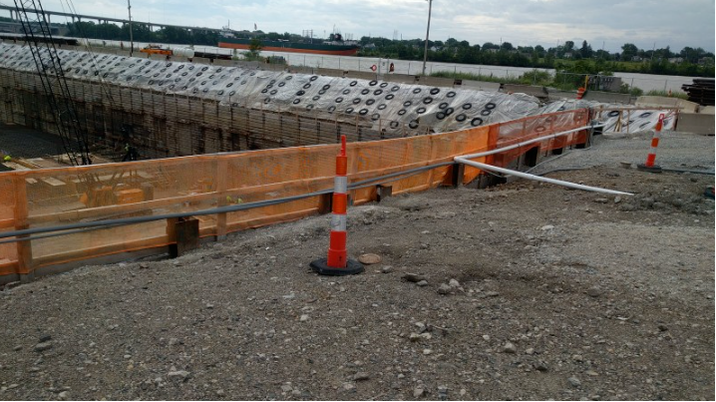Just How Consulting Engineers Enhance Geotechnical Design Projects: Insights Into Their Proficiency, Techniques, and Collaborative Approaches
Consulting engineers are pivotal in improving geotechnical design tasks, using their specialized expertise to browse the complexities of subsurface conditions. Their collective approaches foster interaction amongst varied job stakeholders, eventually shaping the project's trajectory.
Duty of Consulting Engineers
The know-how of consulting designers in geotechnical engineering is essential to the effective implementation of construction projects. These specialists play an essential duty in analyzing soil and rock residential properties, which are critical aspects affecting design and building and construction decisions. By performing thorough site examinations, speaking with engineers accumulate necessary information that educates the style procedure, making sure jobs are improved stable and suitable ground.
Consulting designers additionally offer important understandings right into danger management (geotechnical geologist). They recognize potential geotechnical risks, such as landslides, dirt liquefaction, and settlement problems, making it possible for stakeholders to implement effective mitigation approaches. Their experience aids in maximizing structure styles, which can lead to significant price savings and improved security
Moreover, consulting engineers serve as a crucial web link in between task proprietors, designers, and professionals. Their capability to equate intricate geotechnical information right into workable suggestions promotes collaboration and assists in notified decision-making throughout the task lifecycle. This multidisciplinary technique not just improves job effectiveness but likewise guarantees conformity with regulative requirements and ideal techniques.
Trick Methodologies in Geotechnical Engineering

One primary method is website investigation, which includes conducting area examinations and research laboratory evaluations to collect information on subsurface conditions. Techniques such as Criterion Penetration Testing (SPT) and Cone Penetration Screening (CPT) are commonly used to assess soil stratigraphy and toughness. Furthermore, geophysical methods, consisting of seismic and electric resistivity surveys, supply non-invasive methods to evaluate subsurface qualities.
An additional critical methodology is mathematical modeling, which enables engineers to replicate numerous situations and forecast just how soil-structure interactions will behave under various loading conditions. Limited Element Analysis (FEA) is a typical strategy employed in this context.
Moreover, the design of foundations, retaining frameworks, and earthworks relies heavily on these approaches - geotechnical geologist. By incorporating advanced analytical tools with area information, consulting engineers can create customized solutions that deal with details job challenges, inevitably adding to the security and safety and security of construction jobs
Value of Dirt Analysis
Dirt evaluation acts as a fundamental component in geotechnical engineering, offering vital understandings right into the physical and chemical properties of soil needed for effective construction preparation. Understanding soil attributes is crucial for determining its load-bearing capacity, drainage actions, and potential for settlement or instability. Thorough soil investigations, including tasting and lab screening, his explanation aid recognize parameters such as soil type, moisture web content, thickness, and shear strength.
These analyses notify the selection of ideal building and construction strategies and products, inevitably influencing task security and long life. Cohesive dirts might require different structure layouts contrasted to granular soils, necessitating tailored design options. Additionally, soil analysis help in determining pollutants that could present dangers to human wellness or the atmosphere, permitting for the advancement of mitigation strategies.
Integrating dirt analysis into the early stages of task growth helps to minimize unforeseen obstacles, ensuring that designers can expect and look at here now deal with prospective issues before they intensify. By establishing a detailed understanding of the site problems, seeking advice from engineers can optimize layout performance and lower expenses, thus boosting the general success of geotechnical design tasks.
Collaborative Approaches in Jobs
Successful geotechnical projects usually rest on collective methods that unite varied knowledge from different disciplines. Reliable partnership among getting in touch with engineers, rock hounds, environmental scientists, and construction specialists is important for attending to intricate difficulties and optimizing task end results. By leveraging the one-of-a-kind skills and expertise of each group participant, tasks can take advantage of an all natural understanding Homepage of the website problems, regulatory demands, and design constraints.
Normal interaction and interdisciplinary meetings facilitate the sharing of understandings and foster a society of synergy. These collective efforts enable the identification of potential threats early in the project lifecycle, allowing for prompt mitigation approaches. Additionally, integrating feedback from stakeholders, including local neighborhoods and regulatory companies, makes sure that all viewpoints are considered, improving project approval and conformity.
In addition, the integration of sophisticated technologies, such as Geographic Info Solution (GIS) and Structure Information Modeling (BIM), more improves collaboration. These devices allow for the real-time sharing of information and visualization of geotechnical problems, advertising educated decision-making. Ultimately, a collaborative approach not only improves task implementation yet additionally lays the foundation for ingenious options to intricate geotechnical engineering difficulties.
Effect On Task End Results

Consulting engineers use sophisticated approaches such as risk evaluation and anticipating modeling, which enhance the precision of task projections. Their ability to incorporate ingenious modern technologies, like geotechnical instrumentation and information analytics, additionally refines the style and construction procedures. Because of this, tasks experience enhanced effectiveness, minimized costs, and minimized delays.
In addition, promoting effective communication and partnership among staff member improves analytical capabilities. When obstacles arise, a joined front allows for speedy identification of remedies, avoiding potential problems. Eventually, the joint efforts of getting in touch with engineers add to higher quality outcomes, guaranteeing that jobs satisfy both regulatory requirements and client assumptions.
Verdict

Comments on “Civil Geotechnical Engineering Services for Commercial and Residential Projects”